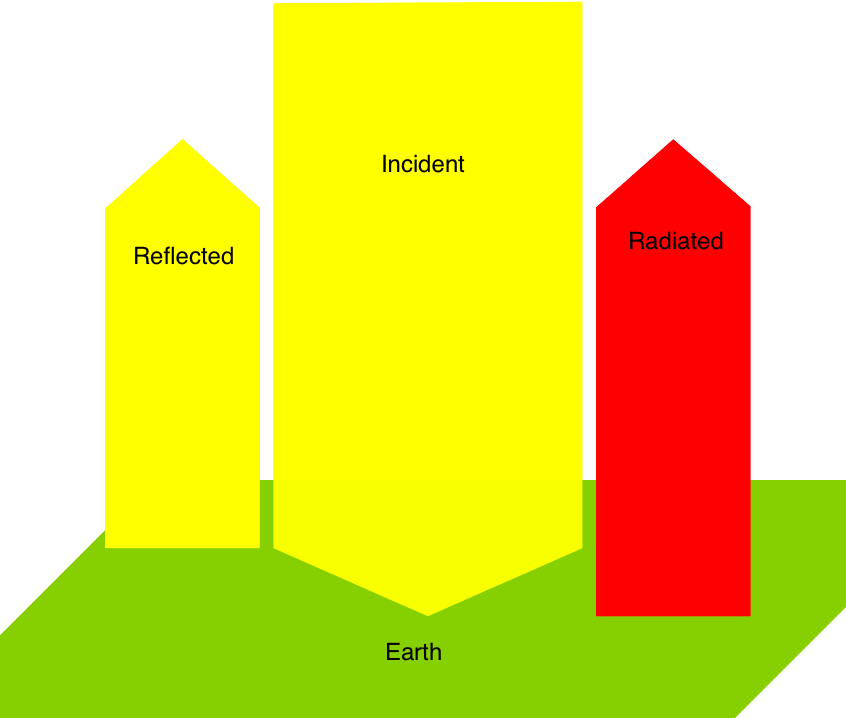 The Subject Guide suggests that this is the best topic in which to learn about Conduction and Convection. However, we have these covered in the heat transfer section.
The Subject Guide suggests that this is the best topic in which to learn about Conduction and Convection. However, we have these covered in the heat transfer section.
This is where we take the energy that is incident on the Earth from the Sun and consider what happens to it.
Key Concepts
The Earth absorbs like it's a disc but emits as a sphere. A way of thinking about this is to consider looking at a ball from a large distance - as far as you're concerned, it could be a pancake.
Therefore:
- We can find the total power of the radiation incident on the Earth by multiplying the solar constant by the area of the silhouette of the Earth
- We can find the average intensity distributed across the Earth by dividing (1) by the total surface area of the Earth as a sphere
MY PROGRESS
How much of Energy to the Earth have you understood?





 Twitter
Twitter  Facebook
Facebook  LinkedIn
LinkedIn